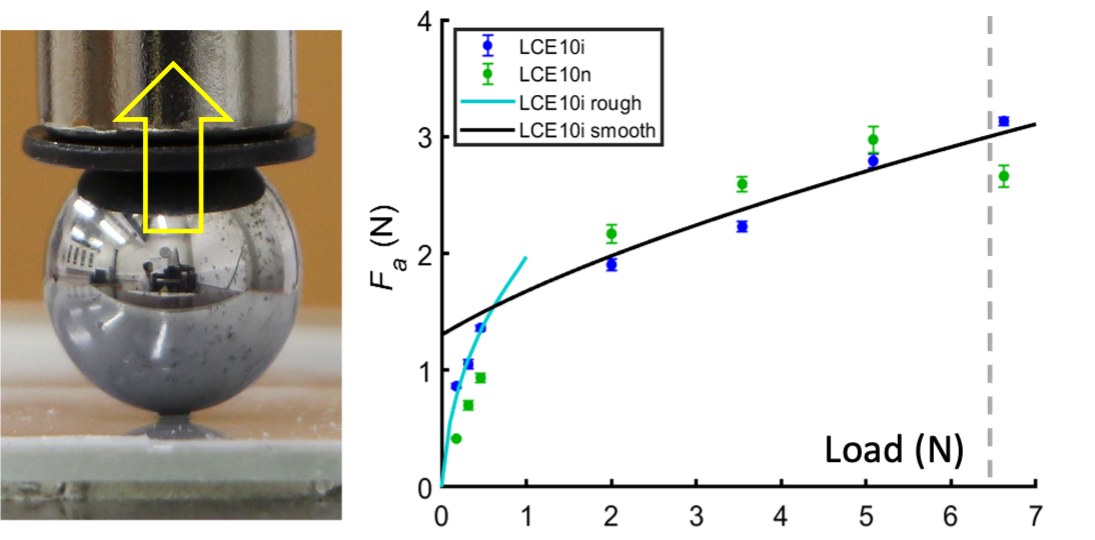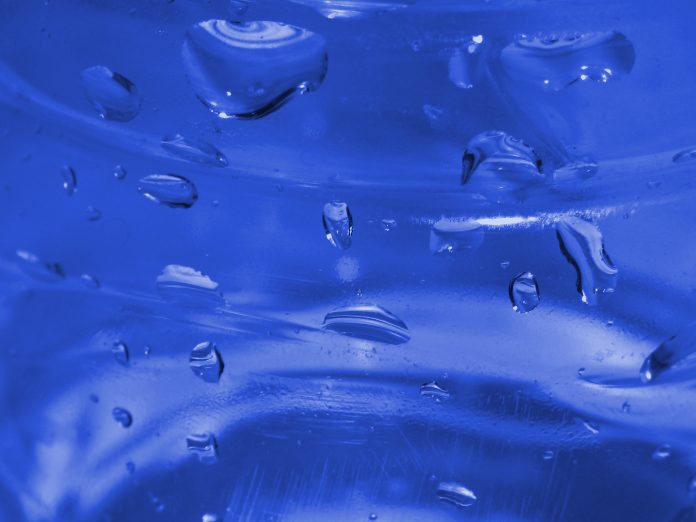Eugene M. Terentjev, a professor of Polymer Physics at the University of Cambridge looks at smart, reusable adhesion through liquid crystalline elastomers
The University of Cambridge, through its ERC-funded APRA project, and the technology spinoff Cambridge Smart Plastics are developing a new concept using liquid crystalline elastomers which are reversibly adhesive, as simple as a hand that grips and lets go on demand.
We have made a naturally sticky rubber that a little heat will alter and allow easy detaching. On cooling, these surfaces immediately get sticky again and are ready to get to work and have a second life. The world’s first in terms of a truly reusable adhesive.
Pressure-sensitive adhesion and the future of reusable tapes
Pressure-sensitive adhesion (distinct from the adhesion by glueing) is a large and expanding field of science and technology, relying on tacky and sticky surfaces. All adhesive tapes are single-use and disposable by their nature. Since over 45 billion square metres of pressure-sensitive adhesion (PSA) tapes are produced annually, the environmental impact should not be underestimated.
Even structural bonding tapes that claim to last for a product lifetime end up replaced by new when repairs or adjustments are made. There is also no realistic route to recycling such tapes given the chemicals at play, the compounded plastics or fabrics carrying them, the spoiling of surfaces and/or polymerisation of glues.
Looking at the state-of-the-art in adhesive tapes, there is no truly reusable tapes. The nearest state-of-the-art exists to rely on simple concepts like “hook-and-loops” on each side to create a Velcro, or alternatively, a sticky elastomer is stretched to detach, but at the cost of destroying the tape.
On the premium and performance end of the market, the best technologies rely on weakly crosslinked polymers. These leave no residue and are reusable until they spoil (surfaces contaminated), but delaminating them is difficult as the full strength of the adhesive must be overcome and this often leads to tearing or damage to the tape itself.
Current and future chemicals regulation affect adhesive tapes
Incoming EU bans for ADCA, DEHP, toluene, and formaldehyde (essential blowing agents for rubbers, plasticisers, and solvents), or the increasing focus of the anti-plastics lobby on how tapes have “dodged” the requirements for recycling (both incorporating and their own end-of-life). This makes the future of this field questionable, and many players are looking at possible solutions.
Liquid crystalline elastomers (LCE) represent a highly unusual and exciting ‘new state of matter’, first introduced in the early 1990s by the work of Finkelmann, Warner and Terentjev. By utilising the known properties of liquid crystals in a rubbery polymer network, some remarkable functionalities were obtained. The main buzz and the focus of researchers over the last few decades has been exploring the thermal and photo-actuation properties of LCE (including our own ERC APRA project).
In the liquid crystalline temperature range, the mesogens that make up the core of this material, align and stretch the polymer chains into an elongated conformation. By heating the sample, this local alignment is lost, and the polymer backbone can relax into a more favoured random-coil conformation. This leads to a macro- scopic, reversible deformation called the large-stroke actuation, where all the attention was until now.


Fundamentally changing surface interaction
In our recent studies, we found a direct link between the internal viscoelastic loss in the material (tan) and the strength of pressure-sensitive adhesion. Since the anomalous damping (high tan) only exists above the glass transition of LCE, and below its nematic-isotropic transition temperature TNI, the high PSA is only found in this temperature range – by heating above TNI, the surface becomes non-adhesive – but on cooling back below TNI, into the ambient range, the strong surface adhesion is recovered.
Such reversible PSA provides a specific and targeted application to realise immediate value from the LCE research. Our solution to reversible PSA is radically different as the introduction of heat or similar stimuli will fundamentally change the surface interaction and make delaminating easy, so that the surface releases much of what spoils regular tapes.
The LCE adhesive tape will also recover its natural shape immediately as in the isotropic phase the shape memory element of the more strongly crosslinked network will kick in. Spoiling risk is also reduced as the surface is no longer sticky when delaminating and can be quickly protected or re-applied to another surface. As such, it is a paradigm shift.
We envisage product repairs conducted quickly and easily with the existing tape reused, or wearable tech (e.g. medical sensors or bandages) that can be removed with warm water or washing, ready to be reapplied once cooled and dried. The reusability of a PSA will increase the useful life of products and will challenge the “replace with new” culture in manufacturing and repairs.
We also forgo the need for solvents and cleaning to remove tapes and residue. The performance of LCE, as a superior bonding and damping material, will also be powerful in terms of light- weighting, given it has higher performance per volume and leads to thinner tapes, or offshoot products like mounts, washers, bushings, etc. in sectors like automotive.
Addressing UK and EU policies on plastic waste
We see this product being used not just for adhesion but as a vibration damping layer in sensitive systems like LIDAR to increase their accuracy, or in power tools to reduce their vibration effect on the operator.
There are also direct environmental benefits to the end-of-life with this technology. Our 3d-generation exchangeable xLCE systems are crosslinked by dynamic bond-exchange chemistry, which makes it recyclable and re-processable thermoset plastic (vitrimer), unlike any standard elastomeric material. That means even when the product is thrown away, there is a possibility to recover and reuse it. The covalent crosslinks are dynamic and the polymer will flow under heat & stress, and allow itself to be remoulded.
This project addresses UK and EU-wide policies on plastic waste and recycling by introducing reusability, and fits neatly to the EU and UK priorities, e.g. the “Clean Growth” Grand Challenge of the Department for BEIS and EU Green Deal. Specifically, advanced materials technology, where the opportunity lies in developing small businesses like Cambridge Smart Plastics, “closely coupled to local universities”. Through our collaboration and know-how transfers, we invest into human capital and skills not just in academic journals, but direct to industry across EU through our industrial partners.
Please note: This is a commercial profile
© 2019. This work is licensed under CC-BY-NC-ND.











